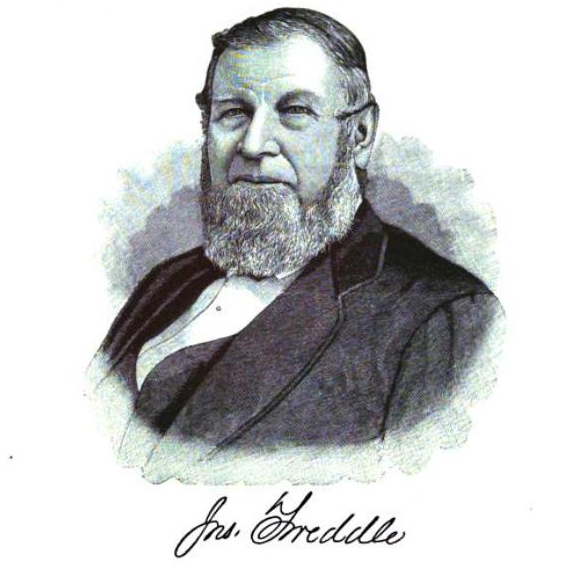
For someone whose name was once synonymous with Albany’s crossroads, having built Tweddle Hall there, it’s surprising that we no longer remember John Tweddle. And yet, he is responsible for one of the most recognizable features of the downtown skyline.
George Rogers Howell, in his “Bi-Centennial History of Albany,” gushed:
“There are monuments more enduring than marble, which are seen and known of all men, and whose inscriptions are intuitively realized, not read. Such monuments are reared by men who pass busy, useful and blameless lives – lives whose imprint is upon the communities in which they live, and whose influence shall be recognized long after shaft of granite shall have crumbled away to fade from view, no more to mark the resting-place of a man that has lived and died.
Such a monument was built up unconsciously and unostentatiously by the late John Tweddle, whose death was a public bereavement, and whose memory has grown bright through an interval of nearly a decade since he passed from earth to be seen no more of men.”
John Tweddle was born in Temple Sowerby, England, in 1798. At age nine he was orphaned by the death of his father, and became an apprentice to a wheelwright. At 21, he borrowed 20 pounds (“the only borrowed money he handled during his whole life,” Howell says) and made the seven-week passage to America. He set up a wheelwright shop in West Chester, Pennsylvania. He built some capital and bought a brewery, knowing nothing of the craft, and was successful for a time. With failure in West Chester, he came to Albany, then a national center of brewing. In 1847, he rented the malt-house of John Taylor, brewer of Albany Imperial XX Ales. The business grew and he opened another malt-house in Albany and two in New York. Recognizing the need for capital in the capital, Tweddle helped organize the Merchants’ Bank in 1853, and served as its president for the rest of his life. He was involved in a variety of civic organizations, and was president of the St. George’s Society. He built the famous Tweddle Hall, Albany’s greatest gathering place, and after it burned replaced it with the Tweddle Building.
He was also a prominent member and warden of St. Peter’s Church on State Street, just a block from his famous Tweddle Hall. When John Tweddle died in 1875, his widow and son made substantial bequests to the church to erect a tower and chimes in his honor. The tower was a prominent addition to St. Peter’s Church, and remains one of the most distinctive architectural features of downtown Albany, with its French Gothic character, its three gargoyles, and its chimes. The bells were made by Meneely and Kimberly of Troy. Each bell is inscribed.
Howell eulogized: “He had lived a good, pure and useful life – a life which had made his fellow-men better for his existence….”

St. Peter’s Episcopal Church on State Street in downtown Albany as photographed on 10 January 2007. (Photo credit: Wikipedia)


Leave a Reply